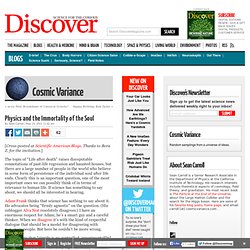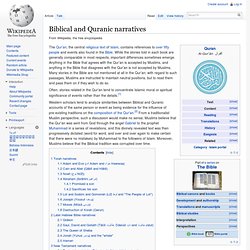

Dead Man's Switch. Writer and Artist Guidelines. Specifications for Devotions THE SECRET PLACE is written solely by freelance writers, and anyone may submit original, unpublished meditations for consideration.

Each submission should be typed (if possible) and contain: Your name, address, and phone number in the upper left-hand corner of each devotion A suggested Scripture passage to be read A title A “Thought for Today” -- usually a Scripture verse (cite full reference and Bible version) but may also be a pertinent thought. We use the New Revised Standard Version unless you specify otherwise. An original meditation of 150 to 200 words (excluding the Scripture, Thought for Today, and prayer) that relates to your Scripture reading and “Thought for Today.” Millerism. Origins[edit]

Seventh-day Adventist Church. Protestant Christian denomination.

Practicing with the Five Hindrances. The Five Hindrances are negative mental states that impede our practice and lead us toward unwholesome action.

All of us have no doubt experienced how sensual desire, anger, sloth, restlessness, and doubt can overtake our minds—not to mention our meditation practice. These negative mind states have enormous potency, and it is difficult to pry ourselves loose from their grasp. In fact, sometimes we take perverse pleasure in indulging them, which of course makes them doubly difficult to overcome. The Twelve Pathways To Higher Consciousness. Buddha and his predecessors. ShambhalaSun.com: Buddhism. Japanese rock garden. Ryōan-ji (late 15th century) in Kyoto, Japan, a famous example of a zen garden A mountain, waterfall, and gravel "river" at Daisen-in (1509–1513) History[edit] Early Japanese rock gardens[edit] Rock gardens existed in Japan at least since the Heian Period (784-1185).

ZEN. Physics and the Immortality of the Soul. [Cross-posted at Scientific American Blogs.

Thanks to Bora Z. for the invitation.] The topic of “Life after death” raises disreputable connotations of past-life regression and haunted houses, but there are a large number of people in the world who believe in some form of persistence of the individual soul after life ends. Clearly this is an important question, one of the most important ones we can possibly think of in terms of relevance to human life. If science has something to say about, we should all be interested in hearing. Adam Frank thinks that science has nothing to say about it. Adam claims that “simply is no controlled, experimental[ly] verifiable information” regarding life after death. Obviously this is completely crazy. We also know better for life after death, although people are much more reluctant to admit it. Everything we know about quantum field theory (QFT) says that there aren’t any sensible answers to these questions.
But let’s say you do that. FOUR NOBLE TRUTHS. The Four Noble Truths represent the core of the teachings of the Buddha, and are as follows: The First Noble Truth - dissatisfaction and suffering exist and are universally experienced.

Qi. Etymology[edit] The etymological explanation for the form of the qi logogram (or chi) in the traditional form 氣 is "steam (气) rising from rice (米) as it cooks".

The earliest way of writing qi consisted of three wavy lines, used to represent one's breath seen on a cold day. A later version, 气, identical to the present-day simplified character, is a stylized version of those same three lines. God in Abrahamic religions. Judaism, Christianity, and Islam are sometimes called "Abrahamic religions" because they all accept the tradition that God revealed himself to the patriarch Abraham.
The theological traditions of all Abrahamic religions are thus to some extent influenced by the depiction of the God of Israel in the Hebrew Bible, and the historical development of monotheism in the history of Judaism. History[edit] The split between Pharisaic/Rabbinic Judaism and Early/Proto-orthodox Christianity was a slowly growing chasm between Christians and Jews in the first centuries of the Christian Era. Even though it is commonly thought that Paul established a Gentile church, it took centuries for a complete break to manifest. However, certain events are perceived as pivotal in the growing rift between Christianity and Judaism. Daniel Boyarin proposes that nascent Christianity and Judaism in late antiquity were intensely and complexly intertwined.
Contemporary religion[edit] Biblical narratives and the Quran. The Qur'an, the central religious text of Islam, contains references to over fifty people and events also found in the Bible.

Jahannam. Jahannam (Arabic: جهنم) is the Islamic concept of Hell.

It is also mentioned in the Quran as: "That which Breaks to Pieces",[1] '"Blazing Fire"[2] and "The Abyss".[3] Description[edit] eBooks: Welcome. Welcome to Buddhanet eBook! S! Here you will find our extensive collection of eBooks that were created by the Buddha Dharma Education Association Inc. for BuddhaNet.Net. The collection covers a large range of topics, from childrens books to art and history, spanning Mayahayana, Theravada and other Buddhist traditions. You will find more eBooks archived in the BuddhaNet File Library.
If you are looking for the Buddhist eLibrary Project, please go here: www.buddhistelibrary.org Our eBooks are FREE. All eBooks contained here are © Copyright 'Buddha Dharma Education Association/Buddhanet.net' All rights reserved unless otherwised indicated.